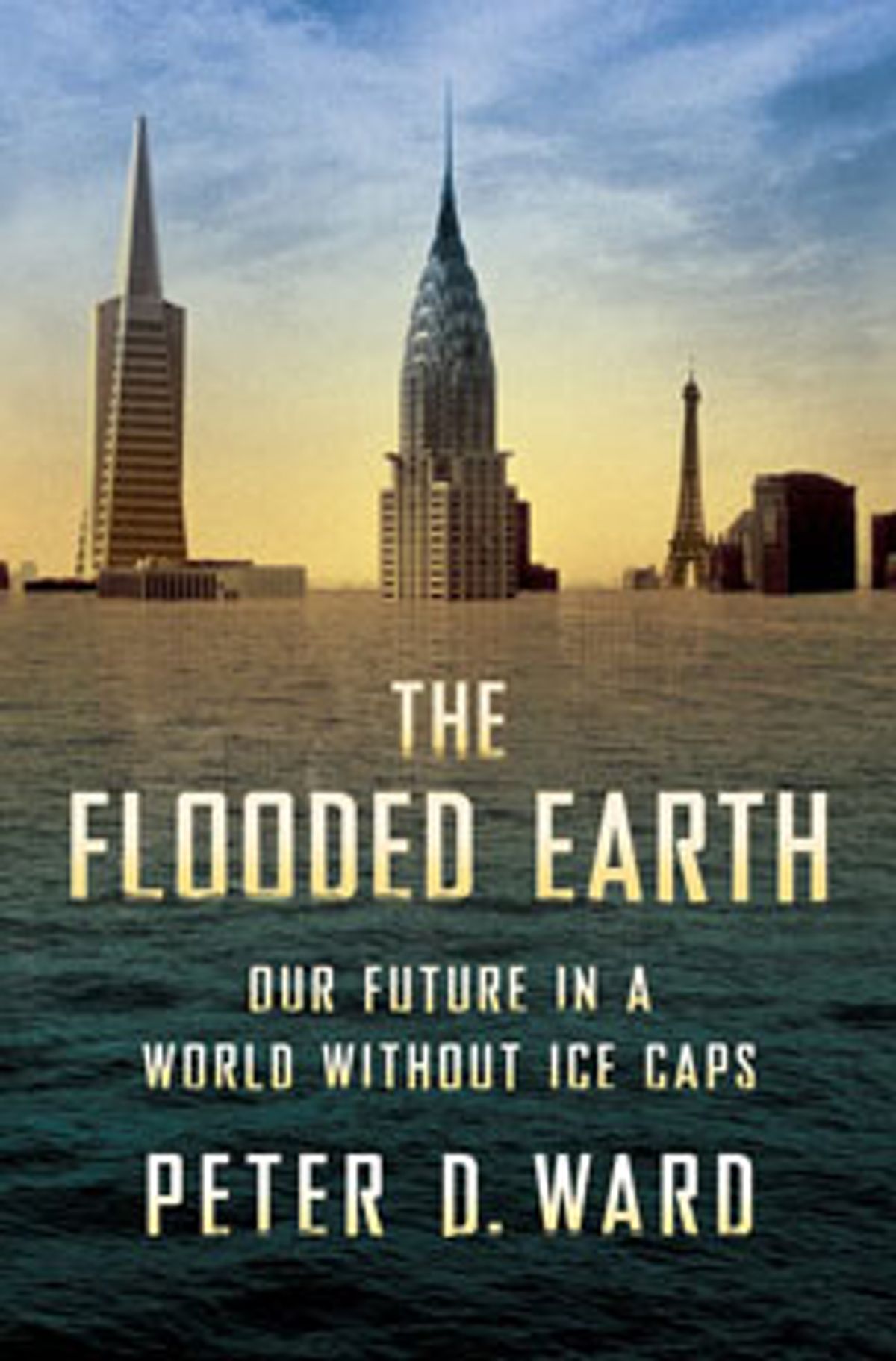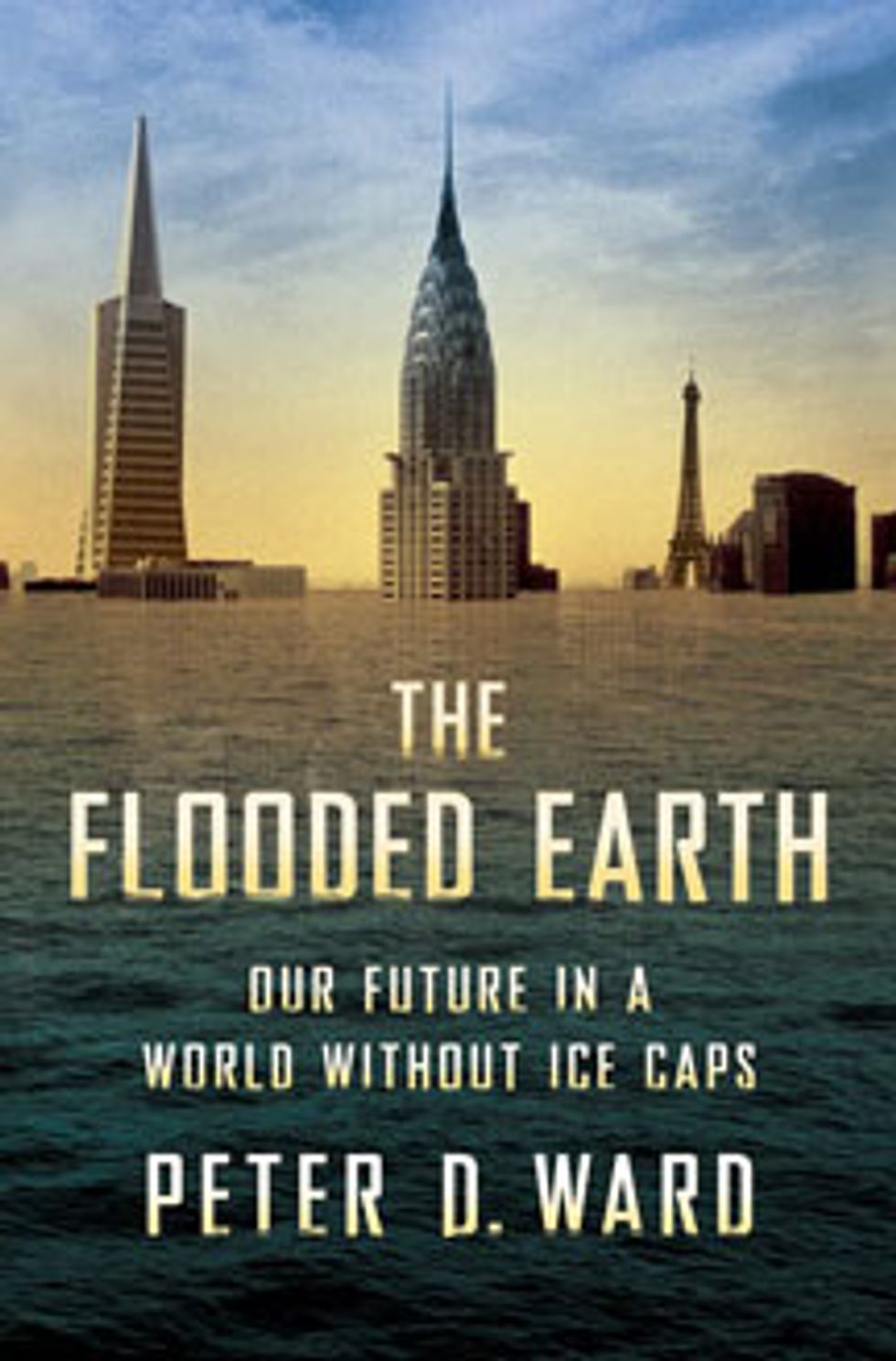Reviewed by Dave Levitan
By Peter D. Ward; Basic Books, 2010; 261 pp.; US $25.95; ISBN 978-0-465-00949-7
Russian geologists sneak into Greenland, where they aim to steal precious uranium hidden under the massive island’s newly ice-free surface. In the Sacramento River valley, baby-eating crows and coyote dogs maraud a dry and barren landscape. In the Netherlands, three million people drown as a storm batters unprotected northern European coastlines.
These are some of the scenes in the fictional portions of Peter D. Ward’s book The Flooded Earth. They portray an all-too-realistic future in which climate change has melted the Greenland and Antarctic ice sheets, causing sea levels to rise hundreds of feet.
Ward seems to think that painting an apocalyptically bleak picture of a warming world is the best way to energize an apathetic populace. His strategy may backfire though, if skeptical readers simply scoff at the Russian spy–geologists of 2215 hunting for uranium, and then ignore the science portions of the book.
That would be a shame, because Ward smoothly mixes his narrative fiction with accurate explanations of the science of falling ice sheets and rising sea levels. In particular, he does a good job of explaining how previous changes in climate, going back millions of years, can inform the present situation. To be sure, The Flooded Earth has its flaws—Ward’s description of so-called clean coal technology, for example, is quick and muddled, and the book covers so much ground that at times it feels cluttered—but overall the science and writing are solid.
Ward’s biggest stumble, though, comes in his solutions to global warming. In two swift paragraphs, he does away with air travel (only dirigibles will survive), all military operations, and the suburbs. Though he admits this is "draconian," there is little benefit to simply telling us to stop doing the things we do, and saying that emissions would drop if we stopped emitting is not exactly ground-breaking advice.
I wish the chapter on solutions had the same strength as the earlier ones that pound home the point that the seas will rise, and explain why. While at first the forays into fiction that begin each chapter appear almost silly, by the end they fit well. Ward may lose some readers along the way with the baby-eating crows, but once he has vividly described the global chaos of even a 5- or 6-meter rise in sea levels, the crows don’t seem so far-fetched.
For more book reviews, see the full list.
About the Author
Dave Levitan is a science journalist who contributes regularly to IEEE Spectrum’s Energywise blog. He has also written for Reuters, Psychology Today, and Mother Jones.

